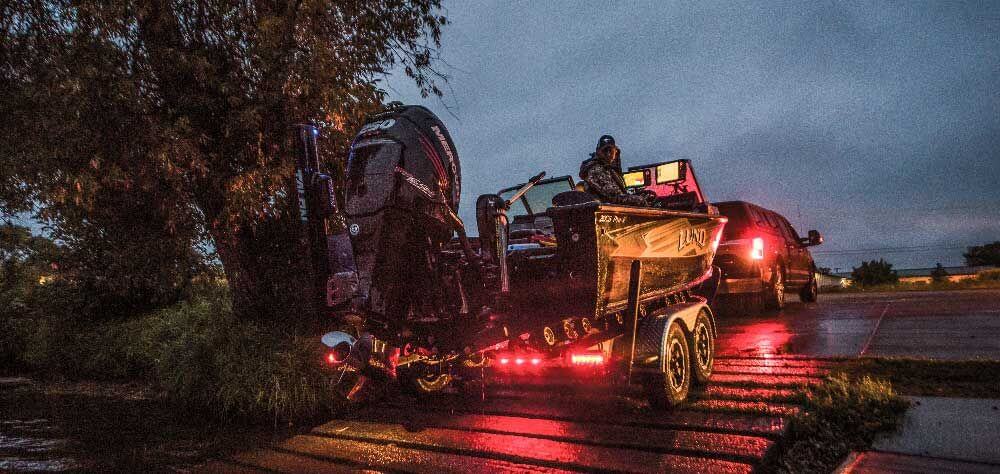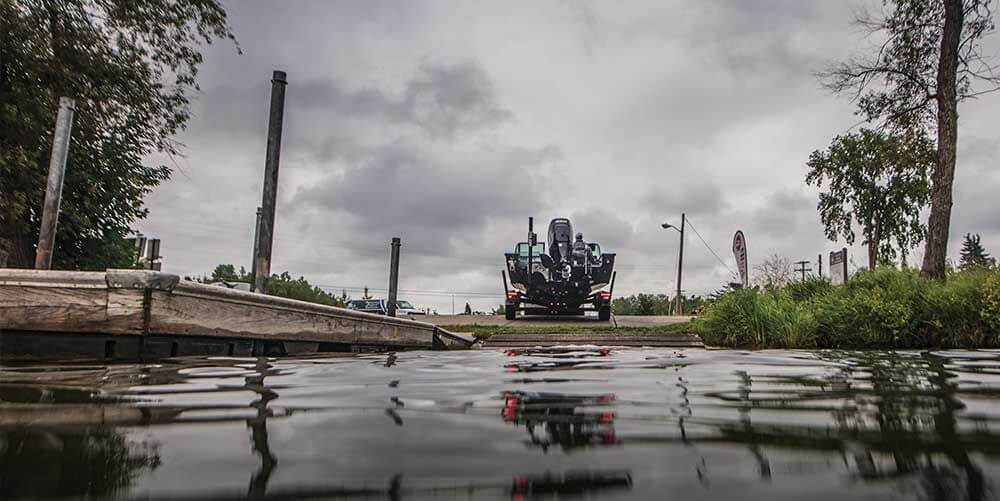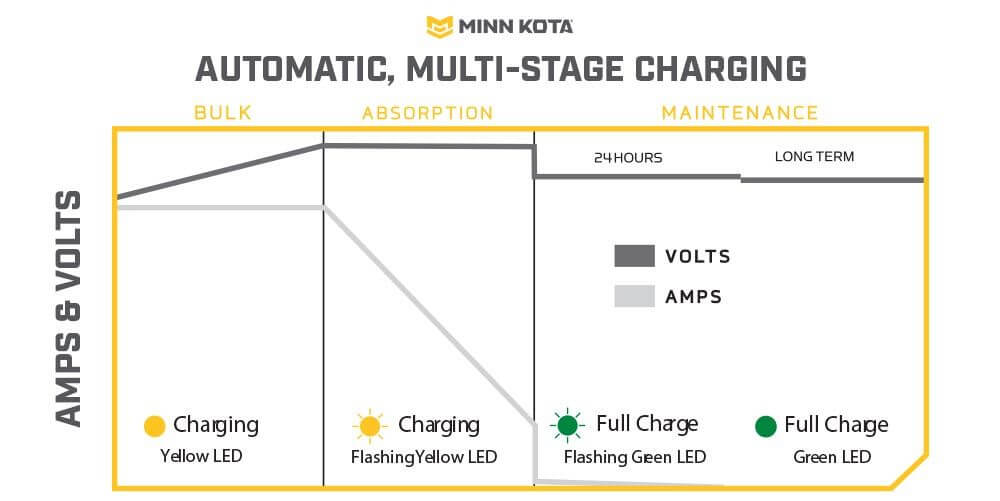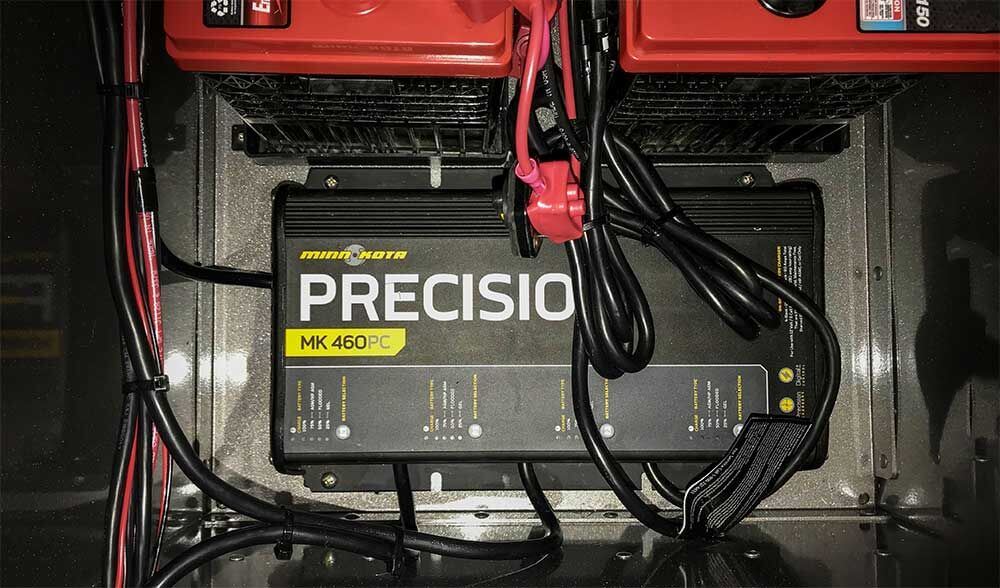How to Charge a Deep Cycle Battery
By Dr. Jason A. Halfen
The Technological Angler // www.technologicalangler.com
The modern fishing boat, whether skippered by a weekend angler or a seasoned tournament pro, depends on electrical power from one or more on-board batteries for nearly all of its essential features and functions.

Need to fill the live well? That pump requires battery power. What about finding fish with your sonar unit? Yep, that fish finder also needs a steady supply of electrical current. What happens when you tap the foot pedal or press a key on the remote control of your Minn Kota trolling motor, should your boat lack sufficient battery power?
Well, the short answer is, nothing: no propulsion and no boat control. You might as well stow the motor and head back to the dock because your fishing day is done.

It's hard to imagine a situation when an angler might not install batteries at the same time that they rig their Minn Kota trolling motor. Yet, poor battery performance, often related to how those batteries were charged, is all too common and represents a significant limitation on our ability to build memories and enjoy success on the water. Indeed, even a premium battery can be ruined – quickly – when used or charged incorrectly.
In this article, we'll explore deep cycle batteries and the best ways to charge them with the help of Minn Kota battery chargers.
What is a Deep Cycle Battery and How Do I Choose One?
Functionally, there are two or three different types of batteries that you'll encounter at your marine dealer. One of these is a marine starting battery (or cranking battery), which is used to start the boat's outboard motor. Starting batteries are designed to deliver a short burst of high current and to not be discharged to a significant level. These batteries have one primary purpose: to turn the outboard's starter so you can get underway.
Once the outboard is running, its alternator will recharge the cranking battery to compensate for the power delivered while starting the motor, and for any power drawn for other "house" needs, including live well or bilge pumps, fish finders, or navigation lights. You should NOT use a cranking battery to power your Minn Kota trolling motor; if your battery is rated in CCA (cold cranking amps) or MCA (marine cranking amps), it is not designed for use with your trolling motor and should be avoided.
Trolling motors are best powered by true deep cycle batteries, which are designed to deliver a low to moderate current over a longer period of time and to be discharged to a much deeper level than comparable marine starting batteries. Moreover, deep cycle batteries are engineered to withstand large numbers of deep discharge/recharging cycles, as would be the case for multiple seasons of powering your Minn Kota motor. The key factor to consider when selecting deep cycle batteries for your trolling motor is their reserve capacity – a larger number here means that your batteries will provide more power for more hours on the water.
You may also encounter hybrid, or dual-purpose marine batteries, which may have the capacity to serve both as a starting battery and as a deep cycle battery. For optimal trolling motor performance over the long term, however, plan to deliver power to your Minn Kota from true deep cycle batteries.
AGM Battery vs. Gel
AGM (Absorbed Glass Mat) batteries are sealed and spill-proof, with a maintenance-free design that makes them the battery of choice for many anglers. Beyond their ease of use, AGM batteries offer significant advantages over the traditional wet cell, or flooded batteries, both on and off the water. In particular, AGM batteries tolerate a much deeper depth of discharge than flooded batteries, stand up very well to use in low temperatures, and are much more resistant to vibration and impact – typical conditions which all anglers face.
Gel batteries are also sealed, spill-proof and maintenance free, but gel batteries and AGM batteries are not the same, Beyond the differences in their design and engineering, gel batteries are less tolerant of high temperatures than comparable AGM batteries, and also typically have less power capacity when compared to an AGM battery of the same physical size. Gel batteries are usually charged at a slower rate than an AGM battery to guard against overheating, which may limit their use in a trolling motor application where rapid charging is needed.
Deep Cycle Battery Charging and Maintenance
Battery Temperature

It is important to understand how temperature affects our batteries' performance and charging, especially within the temperature range that we typically use and store our boats. Let's consider first very cold temperatures – at and below freezing. When compared to more moderate temperatures, batteries have a lower capacity when they are very cold. This is why a car battery can start your vehicle just fine during the summer but might struggle to do so during the coldest weeks of the winter. Battery capacities increase as their temperature increases, but at the same time, battery lifetime falls – especially at extremely hot temperatures.
The voltage needed to charge a discharged battery also changes as a function of temperature. In general terms, a battery requires more charging volts per cell when it is cold than it does when the battery is warm. This is why automatic temperature compensation in a battery charger is important, as we want our batteries to be charged as efficiently as possible, regardless of the season and the ambient temperature.
Battery Charging Cycles
A typical deep cycle battery, regardless of its design, is designed to reach a significant depth of discharge – the fraction of the battery's original capacity that is consumed through use – and then be recharged to full capacity, for many cycles over its lifetime. Indeed, a typical cycle for a deep cycle battery would start at 100% capacity, followed by discharge of the battery to between 20 and 50% of its original capacity, and then recharge back to 100%.
The lifetime of your batteries will also be influenced by their typical depth of discharge. A battery that most frequently reaches 50% depth of discharge will last longer than a battery that is often pushed to a greater depth of discharge. However, at the same time, repeated shallow discharge (5-10%) of a deep cycle battery also contributes to shortened lifespans.
From a pragmatic standpoint, quality deep cycle batteries are engineered to be discharged and then recharged to full capacity. Don't be conservative with your batteries on the water, and when you're back on dry land, recharge with a Minn Kota onboard charger to intelligently restore them to full capacity.
The Float Charger

A Float Charger will recharge batteries in three distinct stages. When you first plug in your Minn Kota onboard charger, your batteries will enter the Bulk Charging phase, when the highest charge voltage and current will be applied to restore battery charge, typically up to a point of 80% of the battery's capacity. It is during this phase that the maximum charge voltage and current output of your onboard charger will be reached.
After the Bulk Charging phase is complete, the onboard charger will automatically switch to the Absorption Charge phase, during which a constant charge voltage is applied, but charging current declines, until the battery reaches 90-95% of its capacity. The very end of the charging cycle is the Float phase, during which the applied voltage and current fall until the battery reaches 100% of its capacity.
The charging voltage and current applied by the onboard charger changes during each stage of the charging cycle and can be influenced by the power supplied to the charger. Indeed, Minn Kota Precision Chargers feature low-line voltage compensation, which ensures that the optimum charging voltage and current are always delivered to the battery, even if the voltage provided to the charger by the supply line falls. This is particularly advantageous if the circuit providing power to the charger experiences a heavy load, or if a long extension cord is needed to connect your onboard charger to power.
It is important to note that float chargers are different from trickle chargers. A trickle battery charger will charge a battery at the same rate as the battery's self-discharge, which is how quickly a battery's capacity falls during storage. Many trickle chargers will output the same voltage and current regardless of the needs of the battery to reach 100% capacity, which can lead to battery damage if substantially overcharged. Minn Kota on-board chargers prevent overcharging by moving intelligently through the three stages of battery charging and maintaining peak capacity during the Float phase.
Charging Time

The time required to charge your deep cycle battery system will be a function of the number of banks (batteries) that need to be charged, and the number of amps-per-bank that your charger can output.
Let's consider first a smaller boat, one with a cranking battery and a single deep cycle battery, like might be used with a 12V Minn Kota PowerDrive™ or Edge trolling motor. With two batteries in the boat, the owner would select a 2-bank battery charger.
Now, let's consider amps-per-bank, and here, a larger number means a faster charge. For example, the Minn Kota Digital Charger is available in a 2-bank model, with outputs that vary between 5 and 10 amps per bank. An economical choice is the 5 amp per bank Digital Charger, and if recharge speed is the key, the owner can easily step up into the 10 amp per bank model.

Now let's consider a more serious angler's platform, one with a cranking battery and a set of three deep cycle batteries to power a 36V bow mount trolling motor, like a Minn Kota Ultrex™ or Ulterra®. Four batteries on board means that we need a charger with 4 banks, and as above, charging time will be reduced if we select a charger with more amps per bank.
All serious angler should strongly consider a Minn Kota Precision Charger to manage battery configurations like this one; 4-bank Precision Chargers offer outputs of 10 or 15 amps per bank, which ensure rapid charging times even under challenging conditions of deep battery discharge and low input line voltage.
Onboard Battery Chargers

Minn Kota offers two families of onboard chargers: Digital Chargers and Precision Chargers. Both provide the same set of core technologies, including:
- Digital microprocessor control of the charging process
- Automatic temperature compensation
- Automatic multi-stage charging
- Waterproof construction
- LED indicator lights
- 3-year warranties
Minn Kota Precision Chargers add premium features, including:
- Battery type selection (flooded, AGM, or gel) for each bank
- Low line voltage compensation
- Battery equalization and maintenance modes for flooded batteries
- Watch this Battery Equalization video for more information

To learn more about the features listed above, visit our Battery Charger Technology page.
Digital Chargers and Precision Chargers are available in a wide range of banks (1-4) and amps-per-bank. Precision Chargers speak to the needs of fervent or competitive anglers, or simply those boaters who demand the best that battery charging technology can offer. Digital Chargers are the perfect solution for the weekend or casual angler, for whom recharge time may be less of an issue.
Portable Marine Battery Chargers
There are plenty of situations for which installation of an onboard charger is impossible or impractical, especially in a small boat with limited storage, a trolling motor-powered kayak or canoe, or a boat used in a wilderness setting. Under these circumstances, it makes sense to consider a portable battery charger.
Minn Kota offers two Portable Chargers, both of which are single bank chargers that provide key charger features, including digital microprocessor control of the charging process, automatic temperature compensation, automatic multi-stage charging, LED indicator lights, and 3-year warranties. The difference between the two Minn Kota Portable Chargers is their amps-per-bank rating: one charger operates at a rate of 5 amps for its simple bank, while the other operates at 10 amps. Both are excellent choices for anglers that require portable battery charging to support their fishing adventures.








